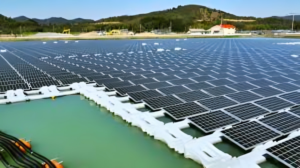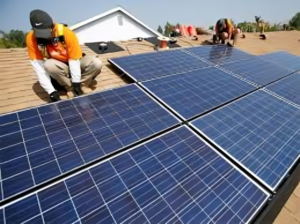Japan’s Innovative Floating Solar Farms to Empower Rural Communities
Introduction
Amid growing concerns over energy security and environmental sustainability, Japan has unveiled a groundbreaking initiative: the deployment of floating solar farms across rural villages. This program aims to harness the vast potential of underutilized water surfaces—such as irrigation ponds, reservoirs, and small lakes—to generate clean electricity, revitalize local economies, and foster community engagement. By integrating advanced photovoltaic technology with smart-grid solutions and community-led management, Japan seeks to set a precedent for rural renewable energy adoption worldwide.

Background: Renewable Energy in Japan’s Countryside
Japan’s energy landscape has undergone significant shifts since the 2011 Fukushima accident, prompting both urban and rural regions to explore alternatives to nuclear power. While large-scale solar installations on rooftops and open fields have become common, rural communities often lack the land availability or grid capacity to support extensive ground-mounted arrays. Floating solar farms offer a solution by:
- Maximizing space efficiency: Utilizing water surfaces prevents competition with agriculture or forestry.
- Enhancing panel performance: The cooling effect of water reduces operating temperatures, improving efficiency by up to 10%.
- Reducing evaporation: Panels act as partial covers, helping to conserve reservoir water levels during dry seasons.
With these advantages, local governments and agricultural cooperatives have begun pilot projects in regions such as Yokkaichi, Shiga Prefecture, and Nagano’s terraced-pond districts, paving the way for broader adoption.
Key Components of the Floating Solar Program
- Modular PV Platforms:
Each floating platform consists of interlocking pontoons supporting high-efficiency solar panels. This modular design allows easy scaling from small community lakes to larger municipal reservoirs. - Smart Inverter Networks:
Onboard inverters convert DC to AC power and communicate real-time performance data to central control stations. AI-driven analytics optimize output based on weather forecasts and grid demand. - Community Energy Cooperatives:
Local residents form cooperatives that own and manage installations. Profits from energy sales are reinvested into community projects—such as school renovations, broadband expansion, and eldercare services.
Real-Life Success Story: Kamogawa Village
In Kamogawa, a village of 2,000 in Chiba Prefecture, residents partnered with the prefectural government to retrofit their irrigation ponds with solar platforms. Within six months, the project achieved:
- Annual generation: 1.2 GWh, covering 60% of the village’s power needs.
- Revenue: ¥24 million from energy sales, funding the construction of a new community center.
- Job creation: Ten part-time positions in maintenance, monitoring, and educational outreach.
Local schoolchildren now tour the floating array as part of their environmental science curriculum, fostering the next generation’s interest in clean energy.

Overcoming Challenges
While promising, the floating solar model faces several hurdles:
- Initial investment: Installation costs can range from ¥200,000 to ¥300,000 per kW, requiring creative financing through public–private partnerships and low-interest green loans.
- Environmental considerations: Careful site assessments ensure minimal disruption to aquatic ecosystems, with measures like fish-friendly pontoons and periodic cleaning to prevent algae buildup.
- Grid integration: Upgrades to distribution lines and the installation of energy storage systems—such as community-scale batteries—are critical to manage intermittent generation.
By addressing these challenges head-on, the Japanese government and local stakeholders have created a replicable roadmap for other nations with similar rural geographies.
Conclusion
Japan’s floating solar farms exemplify how innovation can bridge the gap between energy needs and environmental stewardship in rural settings. Through modular technology, smart grid integration, and community ownership, villages are transforming idle water bodies into renewable powerhouses that boost local economies and strengthen social cohesion. As the program expands, it promises a dual benefit: accelerating national decarbonization goals while breathing new life into communities once facing demographic decline.